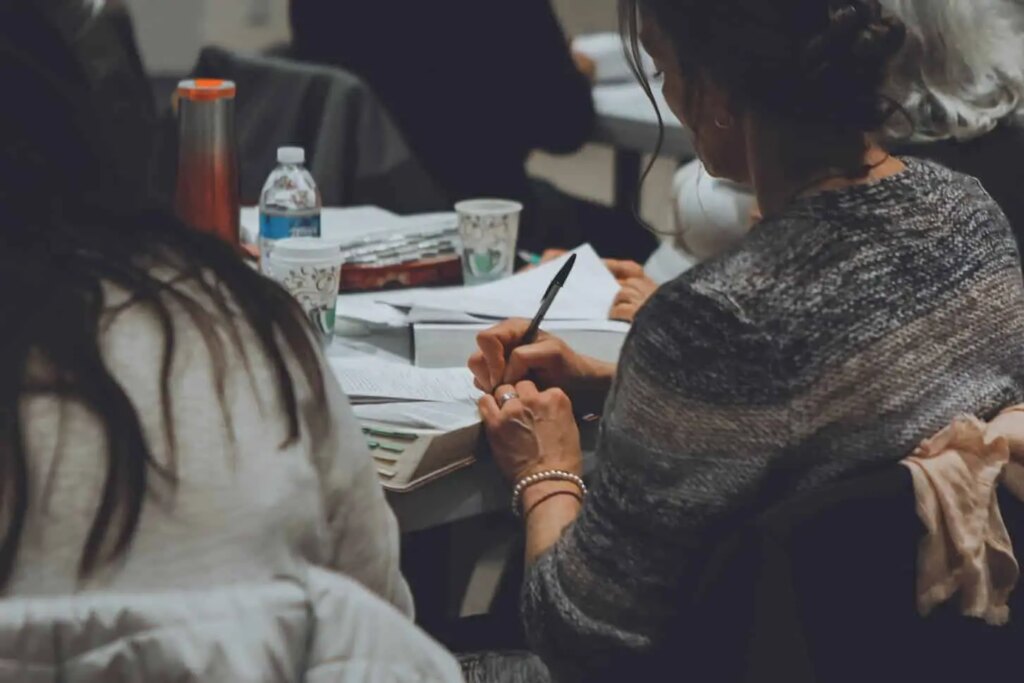How To Learn Anything Fast And Remember It: Top Strategies

This article contains proven steps and techniques on how to learn something quickly and remember it.
Do you want to improve your creativity and memory? If you ever wondered “how can I learn something fast?”. Is there a subject you need to study, a book you need to memorize, or an article you need to study? Do you want to reduce your risk of developing Alzheimer’s and Dementia?
You will understand the basics of how to control your brain and how to learn something. You will undergo a step by step process of how to engage your brain to learn more.
Not only that, but you will learn “hacks,” tools and techniques I’ve learned from the best in the world, to memorize and learn at an incredible pace. You will also learn historical secret methods to improve concentration, focus and memory.
How the Brain Works
The brain is the grey matter in our heads that weighs between 1300 and 1400 grams (about 3 pounds). It is made of brain cells, otherwise known as neurons. Neurons are connected to one another by connections called synapses. Neurons form billions of connections throughout your entire brain system.
Now what does this must do with studying? Well, the brain “reads” information from neurons by seeing how they’re connected to one another.
The stronger your memories, the stronger the synapses (connections) the neurons have between one another in your brain. Think of it like a rope. The more connections between neurons, the thicker the rope. The thicker the rope, the more strong it is going to be.
How are new connections formed and how can they be made stronger? In other words, how am I able to learn new things and not forget them?
Connections between neurons are continually changing. You meet a new person and remember their name, otherwise you forget your mother’s birthday. Connections are continually being made and lost. What determines which connections the brain wants to maintain and break? Their importance.
Logically your mother’s birthday might be very important to you, but somehow the brain keeps cutting it off. If your mother’s birthday were a matter of life or death for you, would you still forget it?
I’m sure you will not. Or, if you were reminded of his birthday every day for 5 years, would you still forget his birthday? I sure do not. Therefore we can conclude that the brain has 2 main funnels for learning:
- Information relevance.
- Repetition.
Repetition also correlates with the importance of information, because if certain facts appear many times between specific time periods, the brain interprets the knowledge to be important.
How To Learn Anything Quickly And Memorize It:
How To Change Your Emotional State To Learn Faster
The brain interprets the importance of the information you want to learn given your current emotional state. The stronger the emotional state, the stronger the connections between neurons.
I’m not talking about positive or negative emotional states even though they’re strong too but rather strong emotional states of curiosity and fervour for the subject you want to study.
So essentially to learn faster you need to determine how to change your emotional state to curiosity and fervour. What determines your emotional state? It’s what you focus on. What determines what you focus on? your race. How can you control your RAS? By asking questions.
Let’s give examples of bad students and good students. First, I actually believe that each human being has the capacity to learn as much as other people, they simply have a different mindset towards learning.
Poor learners in class subconsciously focus on “Why should I learn this because I won’t need it in the future?” This thought automatically associates feelings of insignificance with the subject.
A good student might think, “How is getting an A on this going to benefit me?” and he would give every kind of answers like “I will get good grades, which means my parents and teachers will be proud of me.
With good grades I might get a scholarship and get into a good college and get a great job.
Learning this also improves my brain’s ability to process information and makes it easier for me to learn things related to this subject in the future.” It’s an endless circle. Start asking questions that get you to focus on the advantages rather than the disadvantages.
What’s the fastest way to forget information? Just do not use it. Let’s say you learned that the word “cat” means “chat” in French by reading it once, and never used it again for a year. What is the likelihood that you’ll remember the word after one year has passed? Yes it’s quite thin.
On the other hand if you repeat the word several times daily in both languages for a month. Chances are you will still remember the word in a year. Repetition is the key to learning, and not using what you have learned is a great way to forget about it.
Using State-Based Learning To Achieve Maximum Results
Let’s say you have a big exam coming up and you listen to classical music while studying. Later, when you listen to classical music, it reminds you of the things you studied and the subjects you studied. Then finally when exam day comes, you sit down and begin taking the exam.
You realize you cannot remember as much when you have classical music playing in the background. This is because the environment in which you learn has an effect on what you remember.
When you study for a test, ensure the environment in which you study is familiar with the actual exam environment.
If no classical music is playing in the background during the test, you possibly should not be listening to classical music while studying. So essentially ensure the environment is similar to the environment in which you’ll be having the exam.
Story Method
Now that you know the basics of learning and how the brain creates curiosity and how to make sure subjects important to learn, it is time to really look at ways and techniques that make learning faster and easier.
Let’s start with Visualization.
Visualization is time-consuming, but it is also the most efficient way to learn everything from small details to big concepts. When you manage to associate pictures and stories with facts and details that you need to remember, you’ll likely never forget those details.
Let’s say you need to remember a series of random words in the right order: boat, kite, pen, deodorant, panda, socks, helicopter, banana, iPhone, London, earplugs, dirty underwear, leaves, calculator.
These words are easy to remember in the right order with a method I call “The Story”. Now before we get into the technique, give yourself 30 seconds to try and memorize all the words without any technique.
After 30 seconds close your eyes and try to repeat the words in the correct order. Please now.
Ok welcome back, how are you? Do you remember everything? If you did, great job. If not, which is more likely, pay close attention because I’m about to teach you how to use the “Story” technique to learn all those words in the right order without any problems.
The Story technique is based on Visualization and associating word sequences with visual cues connected to objects on the timeline. Simply put, we use the words in the stories we create in our heads to remember them. Ok let’s get started.
Imagine yourself standing in front of a small lake. Now imagine an empty gray wooden boat floating peacefully on a lake. Suddenly a big red kite came from under the water and fell on the boat. As the kite rises into the sky, you see an enormous pen connected to it.
The pen smells like the best deodorant in the world. You can smell the sweet fragrance coming your way. Suddenly someone grabs your hand, you turn around and see a big panda-like human standing behind you. You notice he has bright green socks in his ears.
The next thing you know a helicopter is flying above you and the pandas. It dropped this rope ladder, and the panda started climbing it. As he was climbing these stairs, he dropped his iPhone on the ground.
The helicopter takes off. You see your iPhone getting a text from a guy named “London” and he asks if you know where his bright orange earplugs and dirty underwear are.
You get confused and throw your iPhone into a tree causing the leaves to fall all around you. You sit down and realize that you’re sitting on a calculator.
This is a story with utterly random events occurring in it. The key here is to visualise the story clearly in your head and think about all the smallest details. Go through the story again and get it really clear in your head. You have now connected the words to the story timeline.
Whenever you want to memorize the words: boat, kite, pen, deodorant, panda, socks, helicopter, banana, iPhone, London, earplugs, dirty underwear, leaves, calculator, you’ll remember the correct order through the story we just made.
Do this for a shopping list or anything you might want to remember.
Using the Pomodoro Technique
It has been scientifically proven that when you want to learn something new, it is best to do it in cycles. One of the best methods I’ve found for doing this is the Pomodoro technique. This is essentially a method where you set a timer to 25 minutes.
Once the timer starts, you start reading, studying, working, or doing whatever tasks you have for the next 25 minutes. After the 25 minutes have passed, and the timer goes off, you have a 5 minute break.
This is simple to handle as it runs in the same 30 minute cycle. 25 minutes of study and 5 minutes of rest. Easy as that. Pomodoro runs in 4 cycles. So after the first 4 cycles, you get 15 minutes of rest. Then the cycle starts again.
There is also a law called Parkinson’s Law, which essentially says that if you’re given a time limit, you’ll normally complete the task by the time limit.
For example, have you ever started a big school project right on the last day of a deadline and still passed? That’s Parkinson’s Law in action.
Using Pomodoro builds a feeling of urgency to complete a task before the bell rings at the 25-minute mark. Parkinson’s law is among the reasons why the Pomodoro technique is so effective.
Remember that it is extremely important to remove all distractions when using the Pomodoro technique. 25 minutes need to be dedicated to 1 task only.
Whether it is writing emails, reading or studying. You are only allowed to check your phone and do what you want on a 5 minute break. Remember: Don’t multitask!
It’s a common misconception that multitasking is productive. No one can do many things directly, your RAS can only focus on 1 main thing at a time. Multitasking is essentially focusing quickly on various things in a brief period of time, and in reality, it does not get anything done properly.
The thing with multitasking is that it feels productive because it looks like you are doing lots of various things at the same time, but in reality you will get more done if you focus on one thing at a time until it is done, and then move on to the next thing.
While studying, just think about studying and avoid multitasking at all costs.
How to Use Pre-Reading
When there is a book or article you want to remember and understand, pre-reading can come in useful. Pre-reading is a really effective tool because it maps out all the important aspects of an article or book that you want to study.
It creates this structure and the first impression of the content, and from there it is easy to connect details from text to structure.
Pre-reading should occur about 5 to 8 times faster than your usual reading speed. In the pre-read phase, read all headings, first and last paragraphs, and skim through the whole content.
From skimming you’ll see certain key words in the text and will get a basic understanding of what the text is about.
It is extremely important that as you read the previous text, ask questions about the text you wish to answer. This really helps create curiosity. Make questions about the title and try to find out what you already know about the subject and want to find out about it.
This type of question makes RAS (1) focus on what really matters. So essentially what pre-reading means is getting your brain to focus on the right things while getting a summary of the content.
How to Effectively Read Textbooks
Textbooks are crammed with solid material that is difficult to digest. The system for reading textbooks is in fact quite easy, and provides an enormous boost to studying textbooks.
Start with pre-reading. Pre-read the whole textbook from cover to cover to get a bigger picture of what the book is all about. Read the table of contents very carefully, and search all the headlines and the first and last paragraphs of every chapter for important words and phrases.
Having read the previous book, you know the structure of the book and what it is about.
The next step is to create a mind map of what you already know about the subject. This clears your head of clutter and sets a good framework for studying.
Now ask yourself “What don’t I know about this subject, and what would I like to know about this subject?” This helps create the correct amount of curiosity, and gets your RAS to think about what’s really important in the text.
Now you can begin in fact reading the text. After you have read the first chapter of this book, write down what you remember from reading it. Don’t take notes as you read, take notes after you have read the chapter.
Now read the chapter again, and then fill in the points you missed when you first wrote down your notes. Do this until the notes reflect all the chapter’s key points.
Once you have written all of your notes, revise and repeat the above process again until you have studied the whole book.
The Correct Way To Use Flash Cards
Basically flash cards are double sided cards. On the first side is the word or fact you want to remember, and on the second side is information about the word or fact written on the first side.
Flashcards are very useful when you try to memorize anything. They are great because they can be made colourful and visually appealing. It’s also an excellent repetition.
Remember, repetition is among the keys to good learning so long as you are interested by what you try to learn. With repetition, the content you want to learn will stick in your head very effectively.
Using flashcards is an excellent way to present and practice vocabulary and facts you want to remember. Flash cards can even be used to break large concepts into smaller parts to help remember information you need to learn.
The most effective way to use flashcards is to read them 3 times a day. As you study, keep making flashcards of concepts, words, or facts you do not understand or remember. After learning, undergo them. Then undergo everything right after waking up and right before going to sleep.
How to Use Mind Maps
Mind mapping is probably the most powerful ways to get a clear understanding of the subject you want to study. Mind maps are where there’s a main concept in the middle of the paper and from that idea it branches out into smaller sections or areas that are related to the main concept.
This is the best way to describe complex concepts or events, such as World War II.
With mind mapping you’ll see the whole structure of the subject you want to study. An incredible trick I use with mind mapping is that I create stories about the parts of the mind map using the “Story” method.
By combining mind mapping and creating stories around it, it multiplied my ability to memorize subjects.
How to make an effective mind map?
- Select the subject you want to create a mind map for
- Use lots of colours because it improves visual memory
- Make sure you have a large sheet of paper or good software
1. Use a picture if possible for the center (if you cannot use a picture, just draw a colourful name in the middle of the paper). You can associate lots of information with pictures. “A picture is worth a thousand words”.
2. Connect the branches to the central idea, and write the key points about the subject to the ends of the branches. Make sure you use lots of various colours to make the entire image more memorable.
3. Create a story using the “The Story” technique that I taught you earlier. Create a story around a central point, and connect different parts of the mind map as the story progresses. This will double your chances of remembering the concept.
How To Maintain Good Long Term Memory
What I’ve learned in the past is that when I experience strong emotions, I can remember them longer than when I feel passive. Emotions trigger memories (2). I’m sure you have vague memories of being a child and being really happy or sad about something.
Moreover, people often remember events when they’re afraid. Usually remembering through emotion works very well, but there’s still the indisputable fact that if your brain registers a memory as “useless”, it will ultimately forget it.
When you want something to stick long term, you need to time the memory at long enough intervals, where you remember the subject you want to remember just before you forget it.
How To Increase Creativity, Memory And Focus.
Meditation is an historical technique that has been used for thousands of years. It is where a person sits in a comfy position, closes his eyes, and concentrates only on his breath.
It’s really hard at first and your mind will start racing and thinking every kind of things. It’s like going to the gym for the brain. How long can you really sit still and just focus on your breath?
Studies show that meditation has great benefits not only mentally but physically as well. People who meditate have higher creativity and better memory.
Conclusion
I want to thank you for taking the time to read my article on how to learn something quickly and remember it. I actually hope that its content has been of good help to you.
You are now ready to start an epic learning journey.







